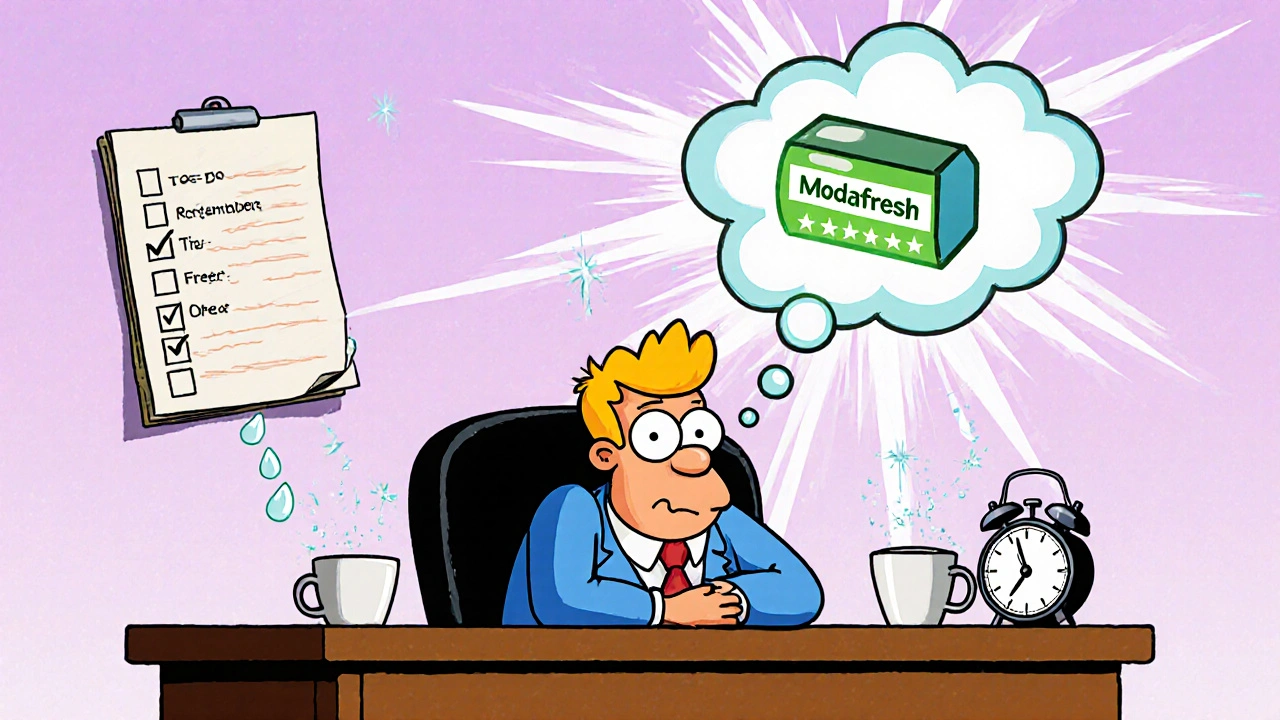Adrafinil: What It Is, How It Works, and What You Need to Know
When people talk about adrafinil, a prodrug that converts into modafinil in the liver to promote alertness and focus. Also known as CRL-40028, it's one of the few legally available compounds in many countries that can boost mental energy without being a classic stimulant like caffeine or amphetamines. Unlike prescription drugs, adrafinil isn't approved by the FDA, but it’s widely used by students, shift workers, and professionals looking for a mental edge. It doesn’t hit like a coffee crash — instead, it builds slowly, often taking 60 to 90 minutes to kick in, and lasts 8 to 12 hours. That’s why many users take it in the morning, not late afternoon.
Adrafinil relates closely to modafinil, the active metabolite and a prescription wakefulness agent used for narcolepsy and shift work sleep disorder. The big difference? Your body has to convert adrafinil into modafinil. That extra step means you need a higher dose — usually 150–300 mg of adrafinil to match 100–200 mg of modafinil. It also puts more strain on your liver. That’s why long-term users often cycle it or switch to modafinil if they can get a prescription. And while both are called nootropics, they’re not the same as supplements like piracetam or L-theanine. Adrafinil works on dopamine and orexin systems, not just memory or relaxation.
People who use adrafinil often report clearer thinking, reduced mental fog, and better task persistence. But side effects aren’t rare: headaches, irritability, and upset stomach show up in about 1 in 5 users. Liver enzyme changes are a real concern if you take it daily for months. That’s why some health guides recommend blood tests if you’re using it regularly. It’s also not safe with alcohol, certain antidepressants, or if you have liver issues. And while it’s not addictive like nicotine or opioids, tolerance builds — so what worked last month might feel weaker now.
Adrafinil fits into a bigger picture of cognitive enhancement. It’s part of a group of substances people turn to when sleep is limited, deadlines are tight, or mental fatigue is high. But it’s not a magic pill. It works best when paired with good sleep hygiene, hydration, and realistic expectations. The posts below dig into real user experiences, how it stacks up against other nootropics like piracetam, what the science says about its long-term safety, and how to spot if it’s doing more harm than good. You’ll find practical advice from people who’ve tried it, stopped it, or switched to alternatives — no hype, just facts.




